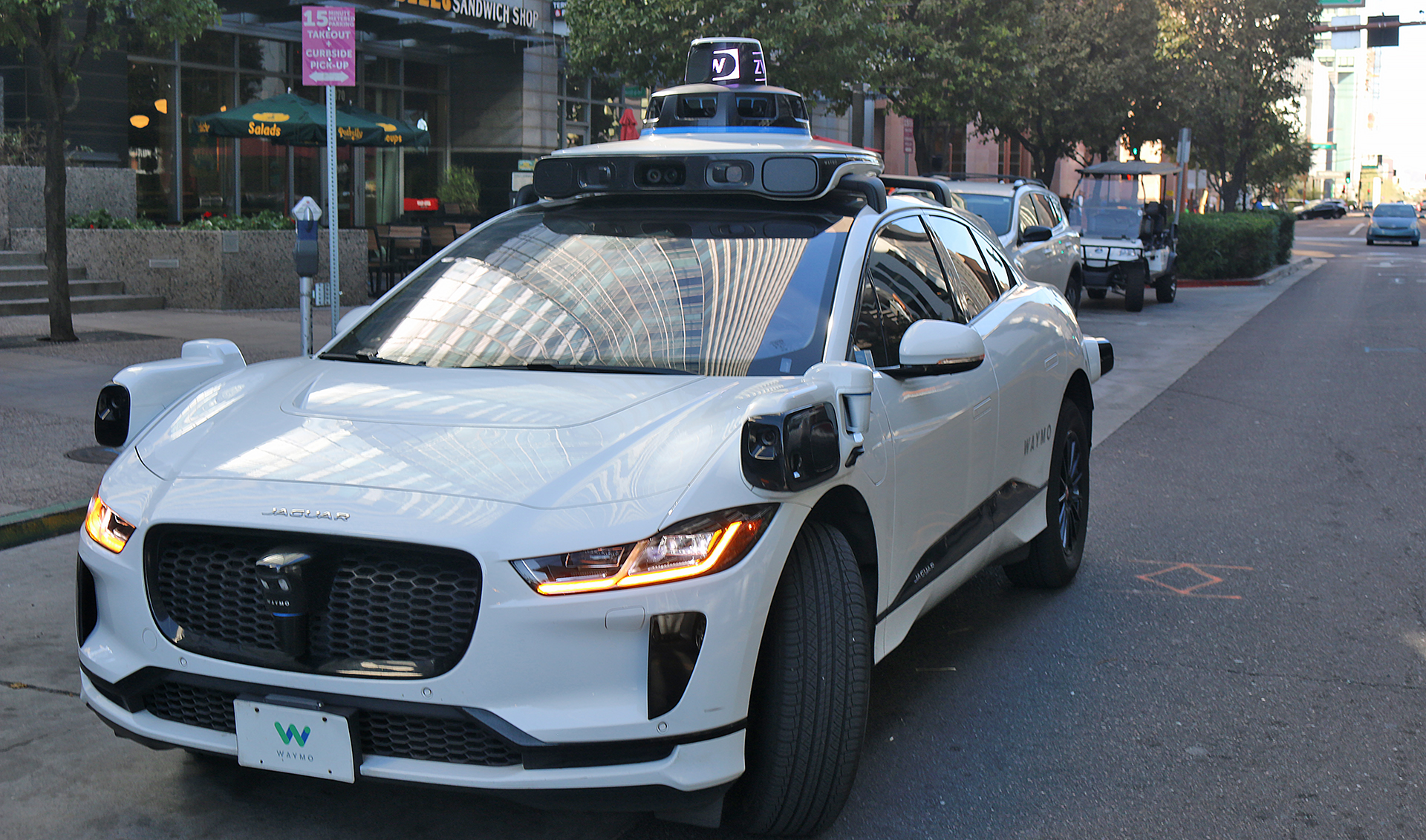I recently completed my first driverless vehicle experience — with video and photographs so that you can see for yourself how the technology works in real life.
My First Driverless Vehicle Experience. With Video.
We wanted to travel from Phoenix to Scottsdale in Arizona; so a mobile software application program was downloaded onto a smartphone prior to summoning a driverless vehicle. The company that operated the autonomous car was Waymo, which was formerly known as the self-driving car project of Google.
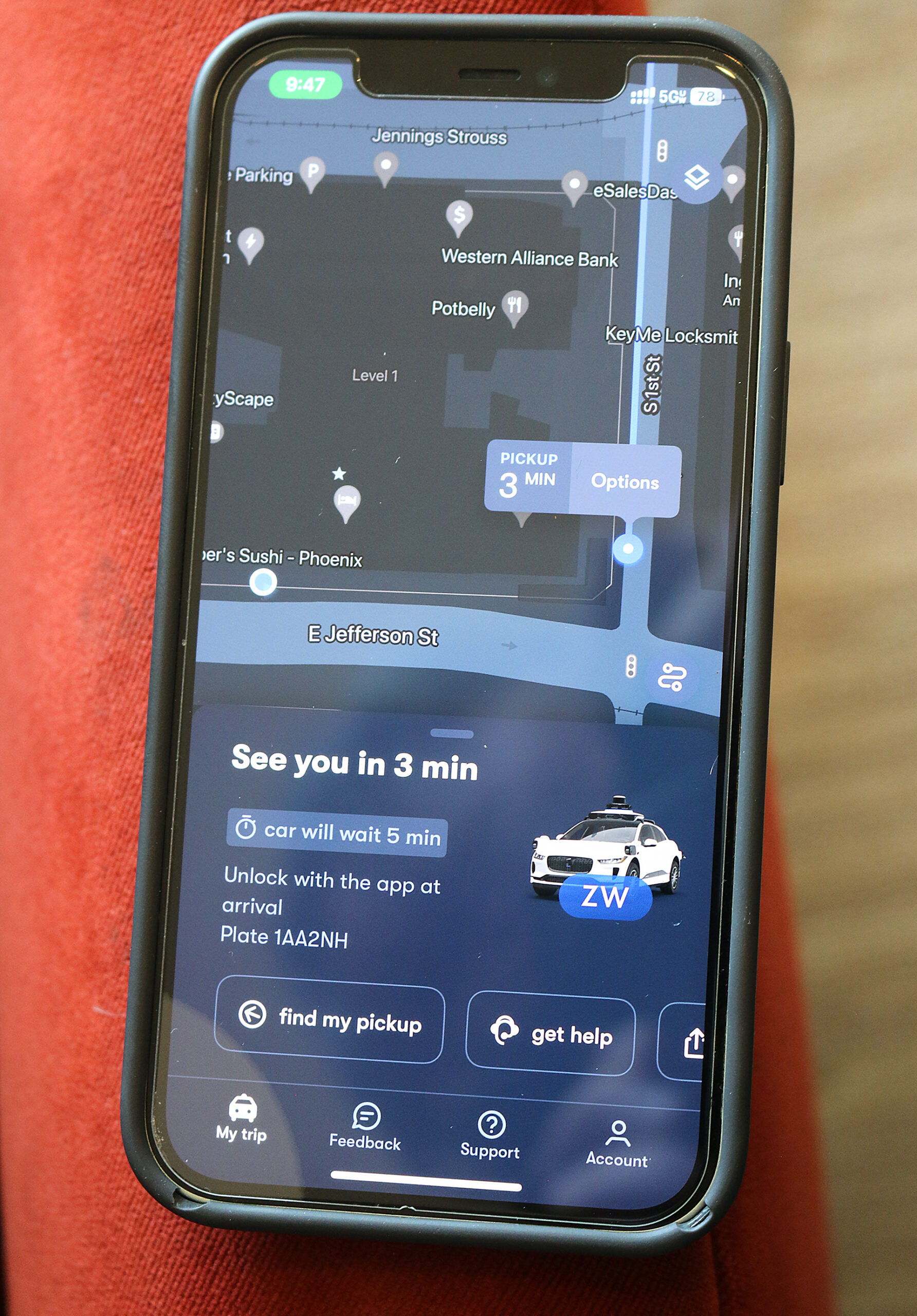
The process of ordering a driverless vehicle was similar to that of a ride share company — such as Lyft or Uber.
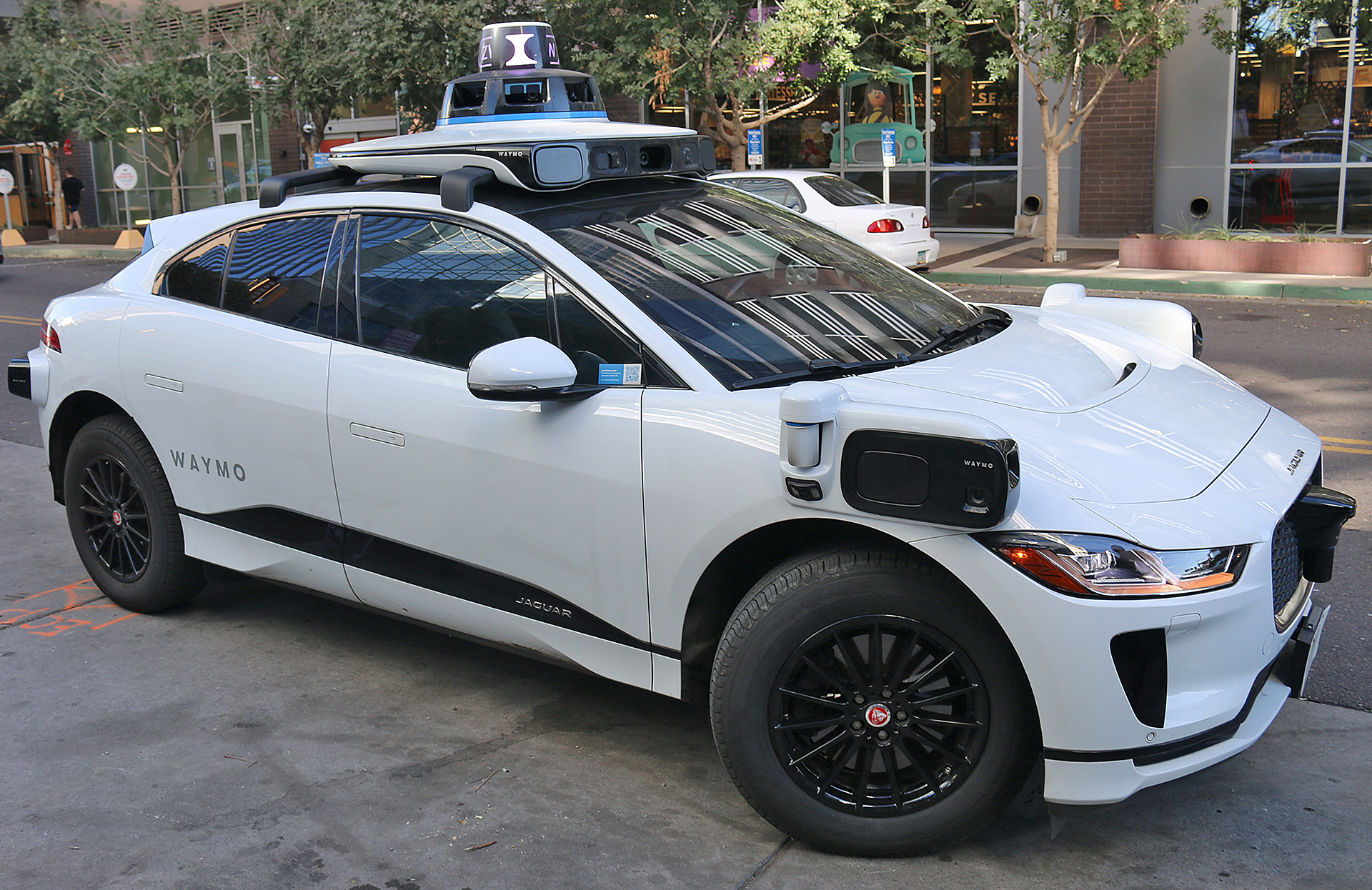
The car that arrived was an electric Jaguar I-PACE that seemed like it traveled from the future — although it was certainly no DMC DeLorean from the classic 1985 film Back To The Future.

We entered the vehicle. At the center of the steering wheel were the words:
Please keep your hands off the wheel
The Waymo Driver is in control at all times
Once the doors were closed, a voice started talking — which you can hear in the video of my driverless car experience.
The seats in the car were fairly comfortable.
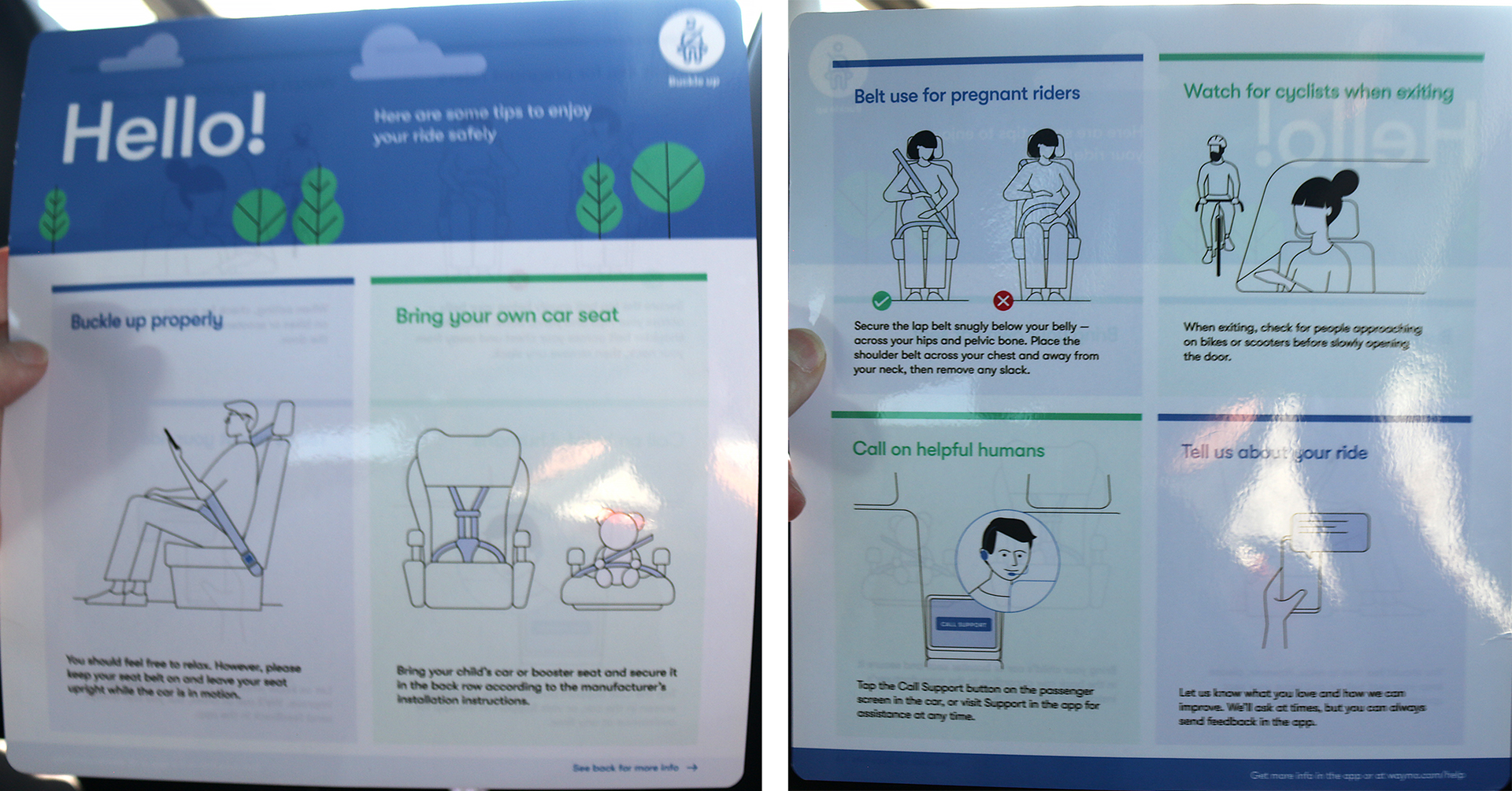
A card gave instructions on the front and back sides on how to best experience this service.
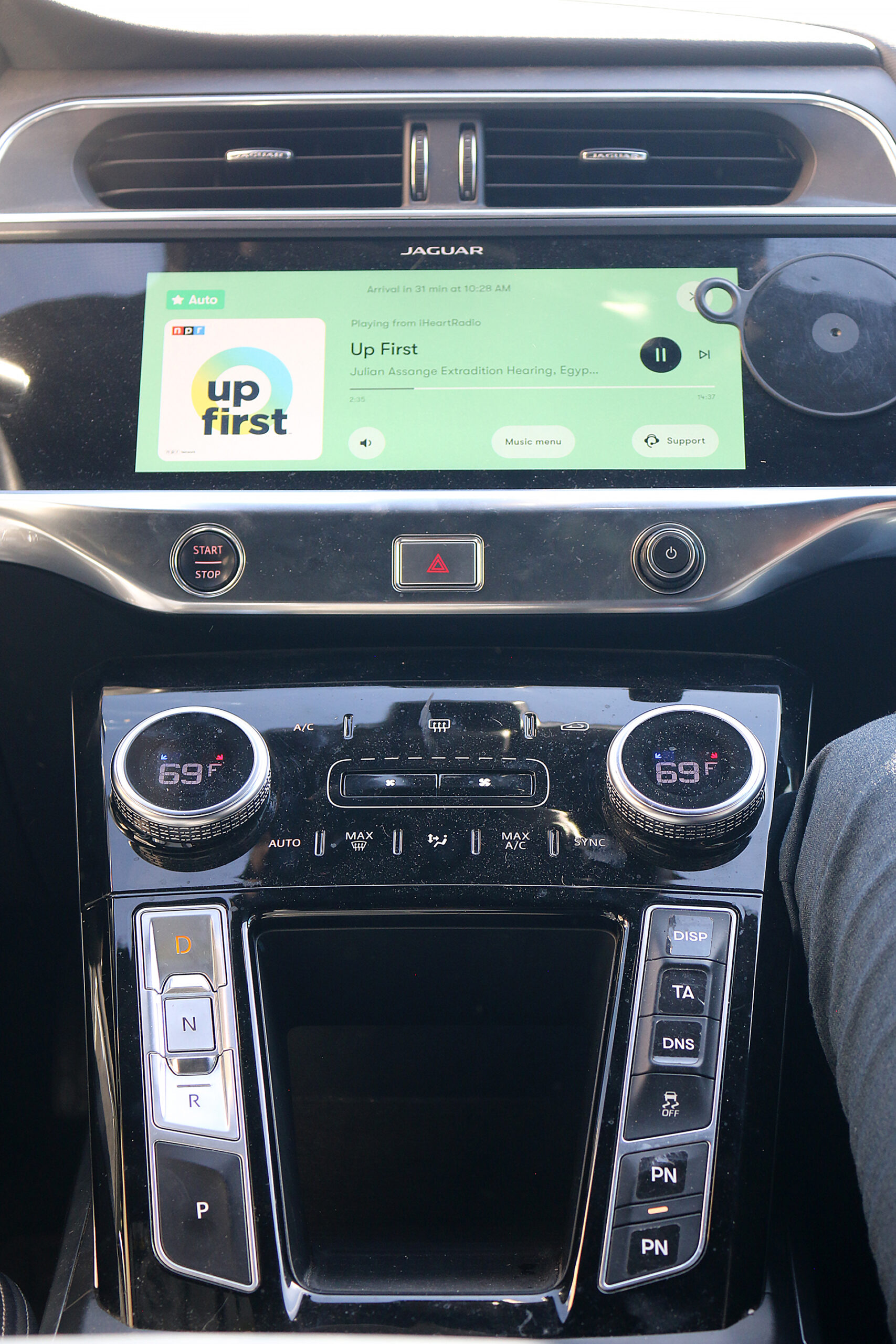
A touch-screen monitor — as well as the typical controls that are usually found in a car — was available to the passenger who was seated up front…

…while a smaller touch-screen monitor was for passengers who are seated in the rear of the vehicle. Two USB-C ports were available for charging electronic devices.
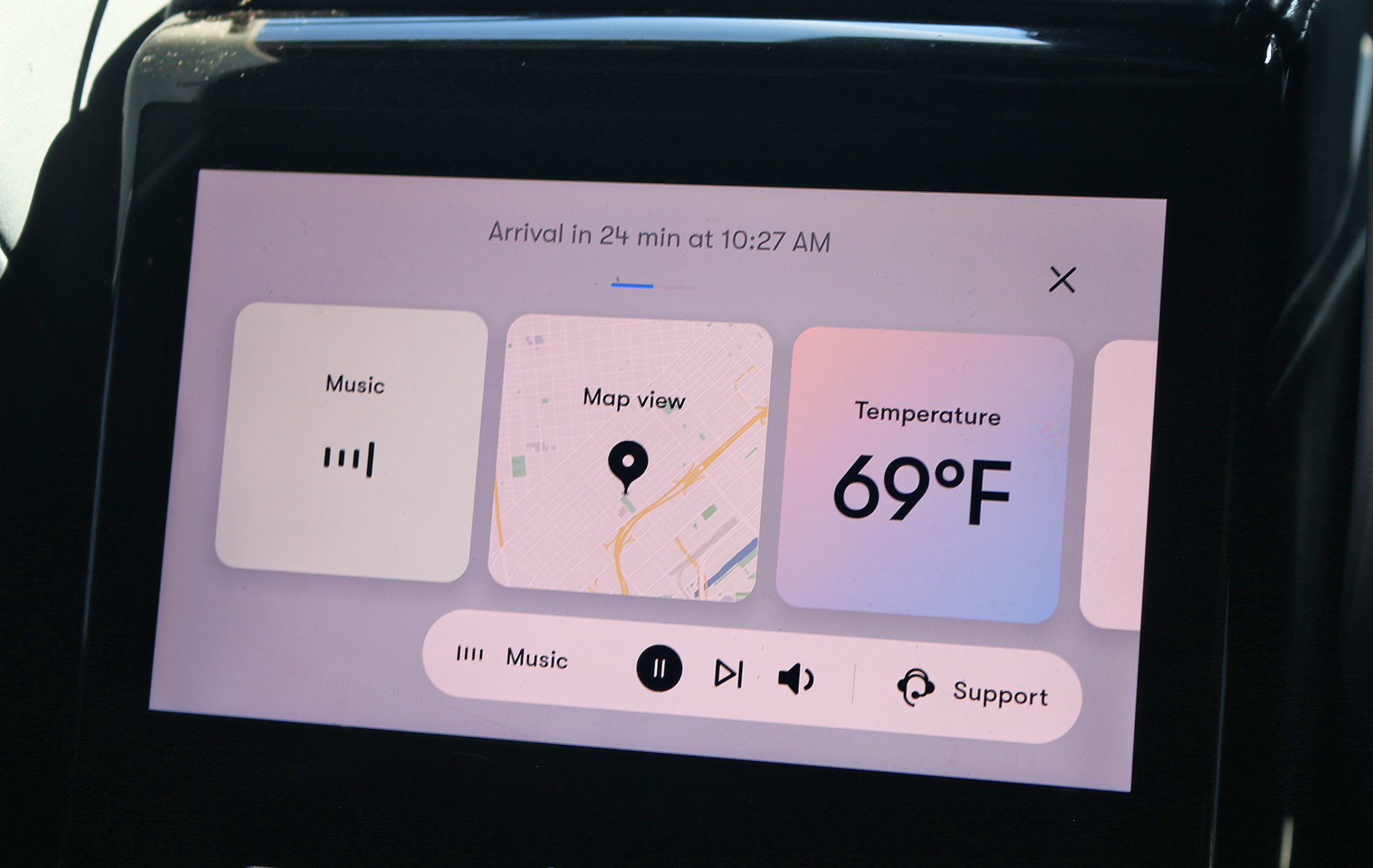
A choice of music, a view of the map, and access to the temperature of the climate control system were some of the features which passengers in the rear seat can use…
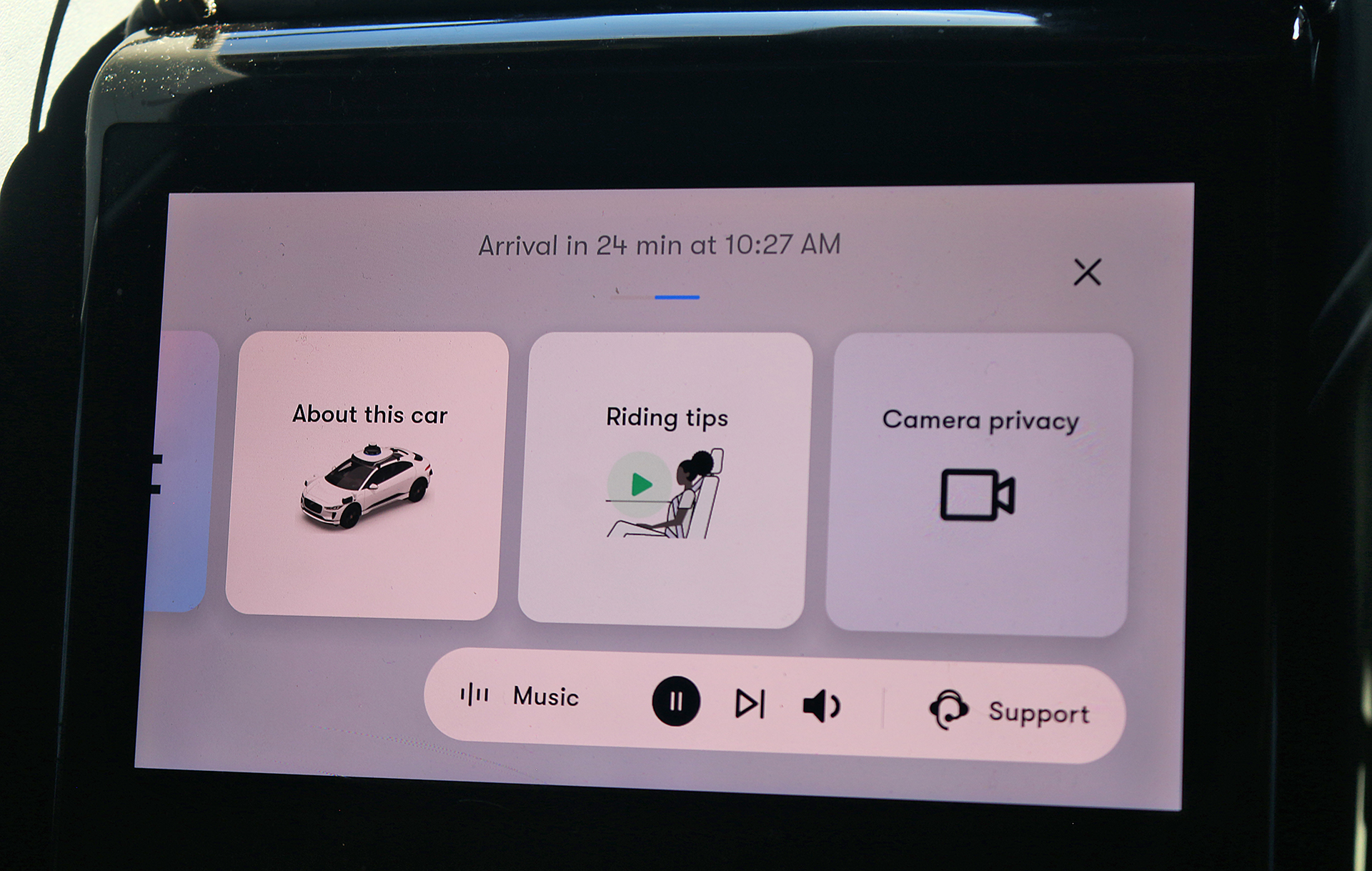
…as well as information about the driverless vehicle itself, tips on riding in it, and camera privacy were also available.
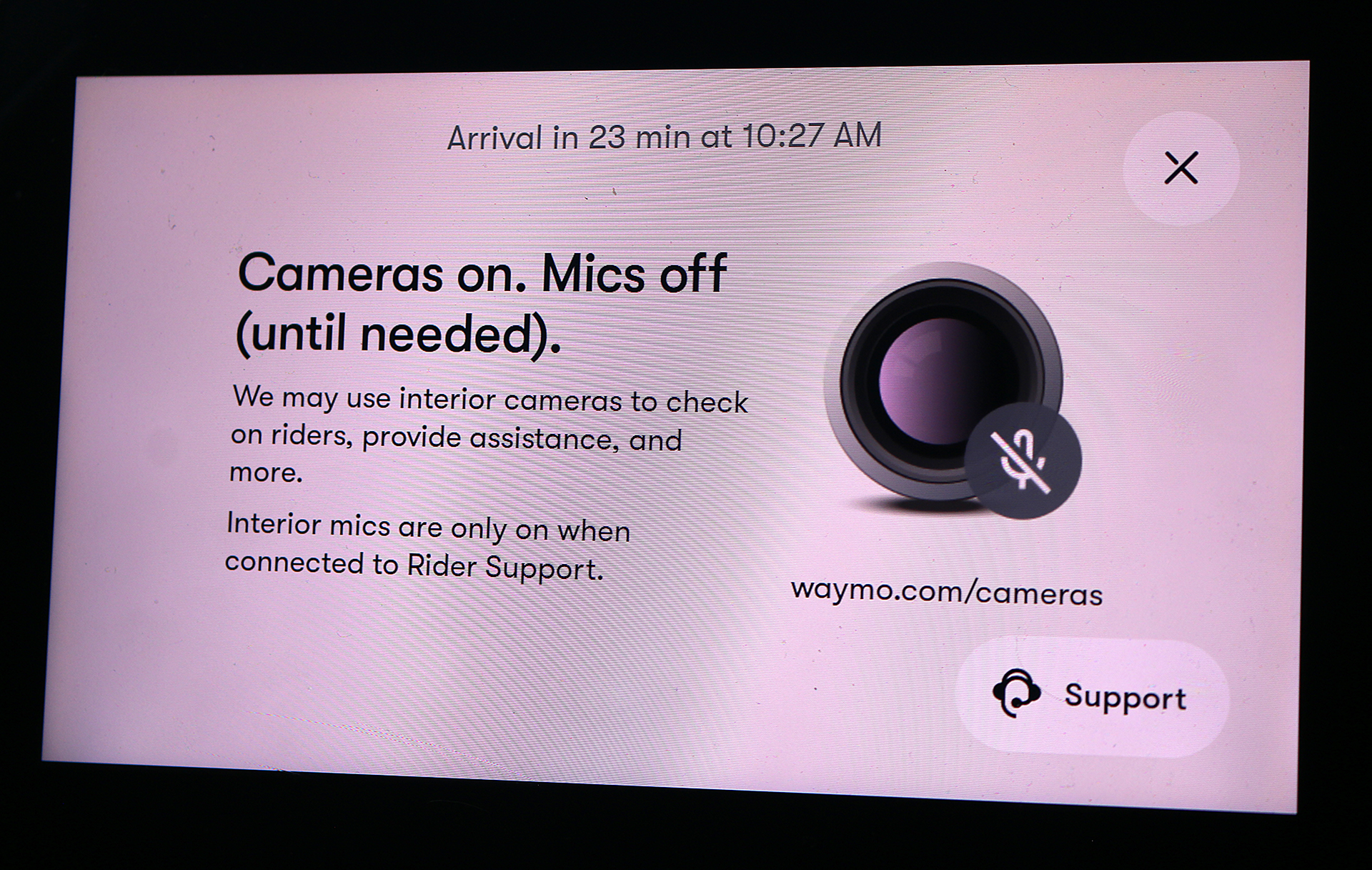
The following message is displayed when Camera privacy is selected:
Cameras on. Mics off (until needed).
We may use interior cameras to check on riders, provide assistance, and more.
Interior mics are only on when connected to Rider Support.
waymo.com/cameras
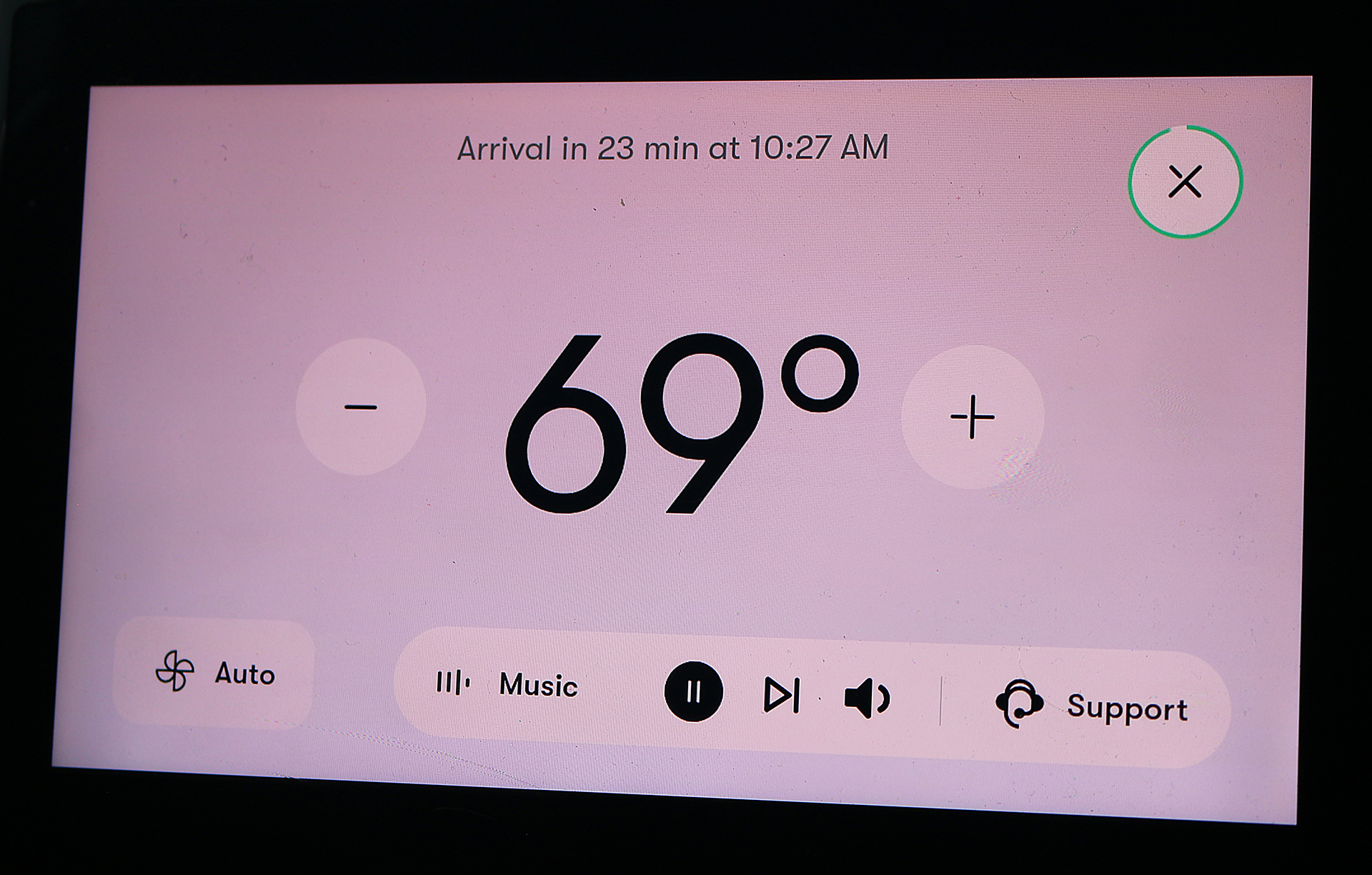
Passengers who are seated in the rear of the driverless vehicle can adjust the speed of the fan as well as the temperature of the climate control system.
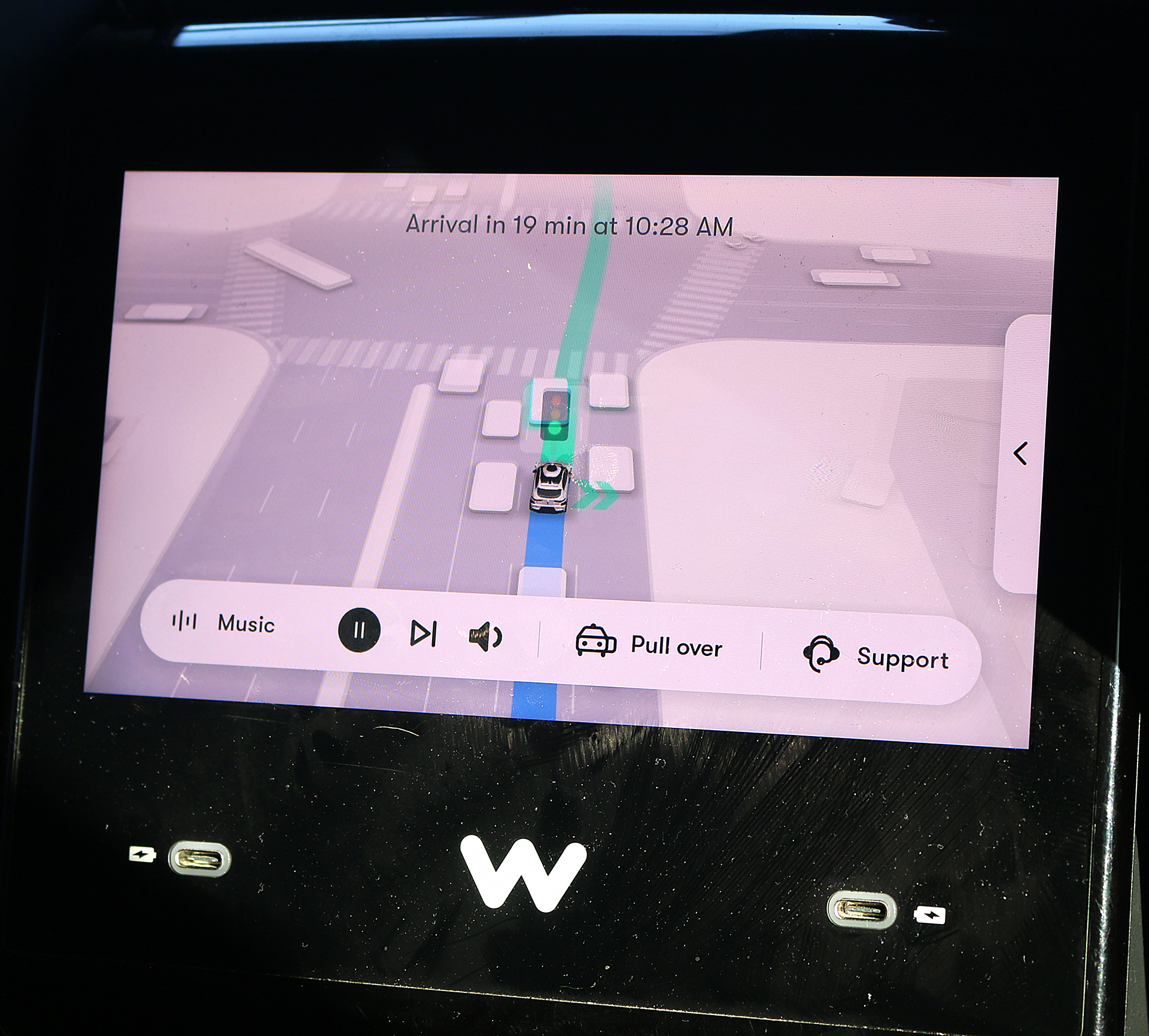
The map shows what is going on at all times.

The touch-screen monitor alerts passengers prior to arrival that the vehicle is approaching its destination. Instructions are then given on how to open the door in order to leave the vehicle.
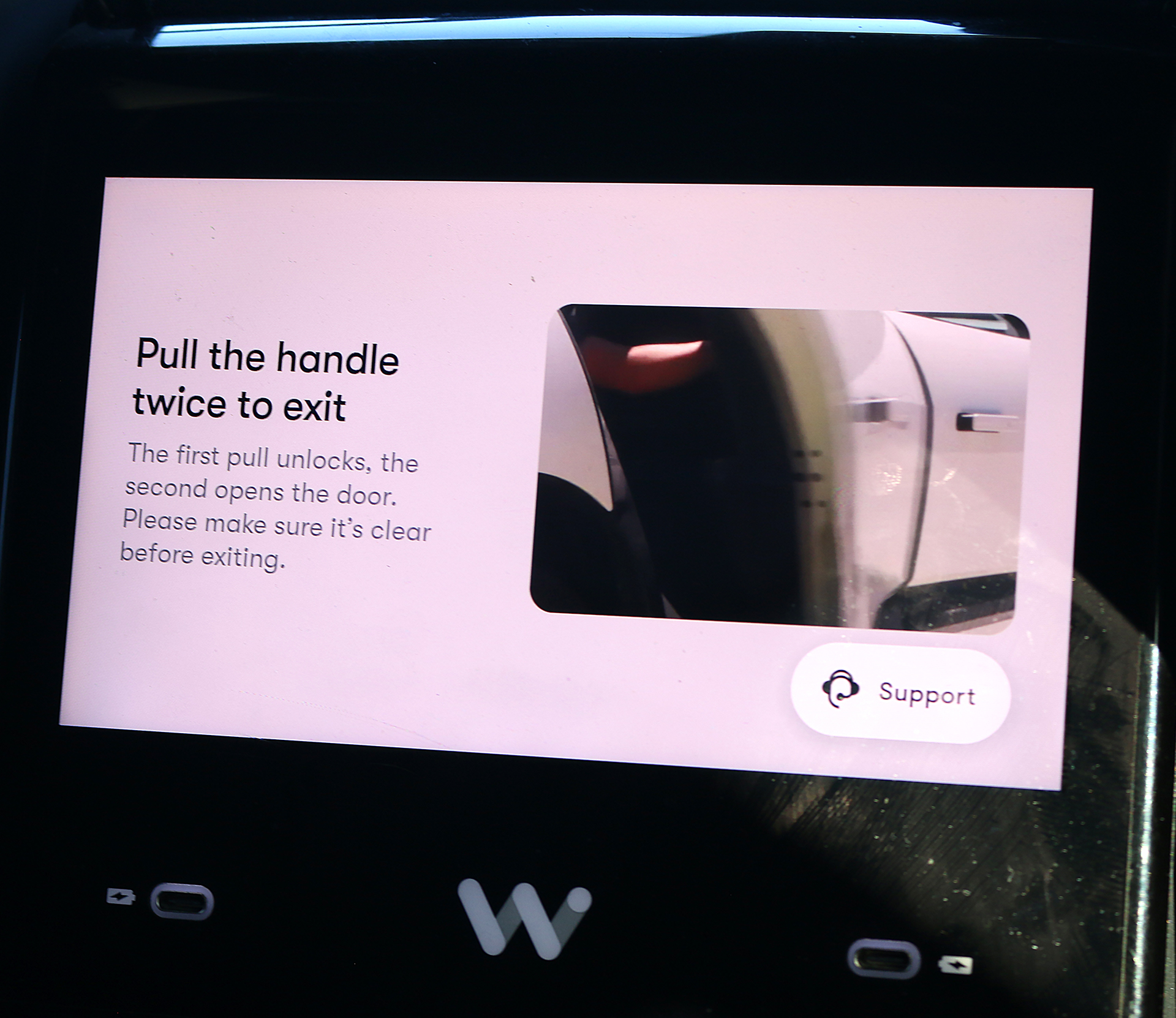
The Experience Itself
We were at the main entrance of a hotel property — complete with its own lane for dropping off passengers or picking up passengers — but we had to walk around the corner to get to the driverless vehicle.
The driverless vehicle always signaled when turning; and it never exceeded the posted speed limit by even one mile per hour. It remained on local streets and never used a limited access highway — meaning that other modes of ground transportation could potentially be faster. It also used the left lane much of the time — except when approaching an intersection to turn right.
A couple of moments caused a bit of discomfort: when the driverless vehicle was about to turn left at an intersection, it correctly detected construction and the road closed — so after straddling the left turn lane with the left lane of the road, it suddenly jerked back into the left lane of through traffic. We experienced an abrupt stop another time when a vehicle seemed like it was going to emerge from a side road without stopping; but the driverless vehicle did have the right of way.
Aside from those moments, I felt completely safe throughout the entire duration of the ride.
Going from Phoenix to Scottsdale with Waymo costs approximately $20.00 — but as no driver was in the vehicle, no tip or gratuity needs to be given. The experience was certainly less expensive than that of a ride share service.
Are Driverless Vehicles Safer Than Those Driven By Human Beings?
“With 100% fewer bodily injury claims and 76% fewer property damage claims, Swiss Re (one of the world’s leading reinsurers) concluded that Waymo is significantly safer than human-driven vehicles”, according to this statement from Waymo. A variety of statistics and information are also displayed there.
John Stossel is a veteran consumer reporter who agrees in this video that driverless vehicles — including trucks and cars — are indeed safer than vehicles that are driven by human beings.
Although driverless vehicles have supposedly been proven to be safer than vehicles which are driven by human beings — at least, to this point when this article was published since the technology was introduced to the public several months ago — the concept is still controversial in terms of safety, as problems have plagued this technology…
…and for drivers and other people who fear losing their livelihoods to this technology, which is explained in detail here.
Final Boarding Call
If you want to experience riding in a driverless taxi, Waymo is currently only available in Phoenix and San Francisco, with Los Angeles and Austin on deck to receive the service next, which is available 24 hours per day, seven days per week.
Other companies have also been entering the driverless vehicle space — but they are even less ubiquitous than Waymo.
Interesting, the experience reminded me briefly of being back in Australia and New Zealand, where nobody occupied the left front seat because they sit in the right side of the vehicle and drive on the left side of the road.
If the technology of driverless vehicles prove to absolutely be safer than vehicles which are driven by human beings, that means that more vehicles could be on the road with less traffic jams and backups — meaning more efficient use of roads and highways — with fewer accidents; as well as being less expensive and friendlier to the environment…
…but the technology could also be more prone to nefarious software “hackers” and concerns pertaining to cybersecurity — as well as concerns about privacy in general, unpredictable traffic patterns, and possible unforeseen costs and consequences.
What are your thoughts about driverless vehicles? If successful, could they pave the way for pilotless commercial airplanes?
All photographs ©2024 by Brian Cohen.
